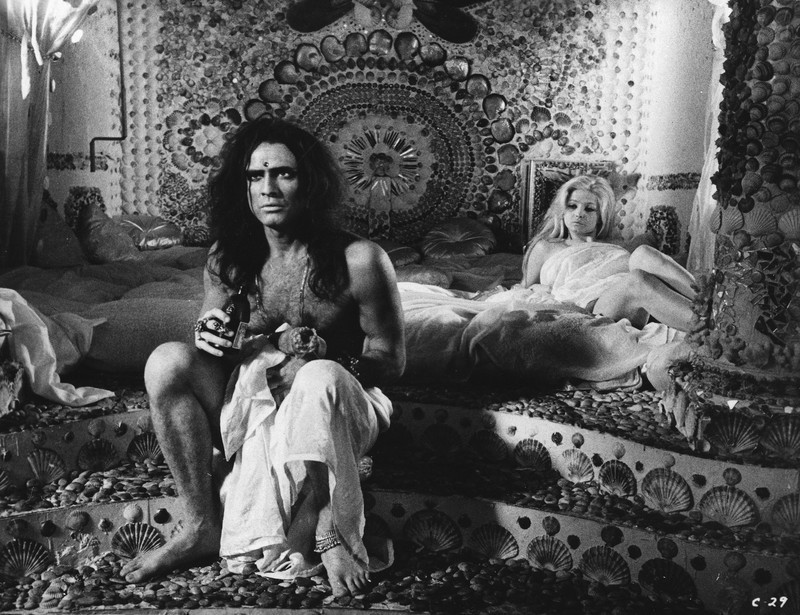
Steve Wozniak may have co-founded Apple, but it was his notorious “US Festival” that makes him one of the greatest rock promoters of our time. First held during Memorial Day weekend in 1982 at the Glen Helen Regional Park outside of Los Angeles, the US Festival (or “Unite us in Song”) was a hopeful outlook toward the coming future and a departure from the “Me Decade” that was the 1970s.
At the time, “Woz” was on leave from Apple after surviving a plane crash that left him unable to create new memories for half a year. Hoping to put together the “Super Bowl of Rock Parties” with a lineup of the best acts in rock music, Wozniak teamed up with heavy-hitter San Francisco promoter Bill Graham to help with the booking. Acts like The Police, Talking Heads, The B52s, Oingo Boingo, Tom Petty and the Heartbreakers, Pat Benatar, Fleetwood Mac, and Jackson Browne all performed over three days. In addition to music, the festival was to feature the latest technological and scientific innovations at an on-site expo, while satellites linked attendees with those watching in the Soviet Union. The US Festival was also the first music event in history to use jumbo screens for unobstructed views.

High ticket prices ($37.50 for three days) and 112-degree heat made the inaugural US Festival a commercial flop. Dedicated to his vision, Wozniak was quick to begin working on his second US Festival, held over Memorial Day weekend in 1983. This time around, Colorado promoter Barry Fey assisted with the booking and they separated each day by genre: New Wave, Heavy Metal, and Rock. The biggest draw of the festival was Heavy Metal Day and its headliner Van Halen, with a record-setting 375,000 tickets sold. Motley Crüe’s Vince Neil referred to it as “The day new wave died and rock ‘n’ roll took over.”

Van Halen set another world record at the US Festival: “highest amount paid to an act for a single performance.” The Guinness World Book of Records even had to invent a new category in order to include them in the 1984 edition. The group was originally intended to make $1 million on the gig, but upon finding out that the late lineup addition of David Bowie also cost $1 million, Van Halen demanded $500,000 more or they weren’t going to perform. Wozniak agreed, in part due to a favored-nation clause in their contract that stated they were to be paid more than any other act at the festival. Van Halen arrived to their set three hours late and completely obliterated. David Lee Roth was so drunk that he could barely recite the lyrics to the band’s songs.
Read what promoter Barry Fey had to say about Van Halen’s fee increase (courtesy of the OC Register):
“The festival was completely booked,” Fey recalls, “and Van Halen had a favored-nation clause in their contract that said no one could get more than them – and they were getting $1 million. Then Steve came to me and said, ‘God, Barry, I really love David Bowie.’ I say, ‘Steve, there’s no room. Let’s put this to bed.’ And he says, ‘Well, I really do love David … could you try? It is my money and my festival.’” So Fey called Bowie, who was then touring Europe a month after the release of his blockbuster album Let’s Dance. He would return that August for two sold-out shows at Angel Stadium. “David tells me: ‘We’ll have to interrupt our tour and charter a 747 to bring our equipment and get it right back again.’ So I went to Steve: ‘David’s gonna cost you a million and a half, but it’s gonna cost you an extra half a million for Van Halen.’ He just shrugged his shoulders: ‘So?’ The addition of Bowie ultimately cost $2 million.”
Van Halen wasn’t the only problematic headliner at the US Festival. Closing out the first day were guerrilla punk-rockers The Clash, who promised their own political objections to the event. Upon discovering Van Halen’s ludicrous guarantee, band leader Joe Strummer demanded that Wozniak and some of the bigger acts donate a portion of their proceeds to charity. When it was discovered that the ticket price had raised unbeknownst to them, The Clash refused to play unless Apple donated $100,000 to charity. Their guarantee was $500,000.

Two hours after their proposed set time, The Clash finally took the stage. Projected on the screen behind them was a banner that read “THE CLASH NOT FOR SALE.” Their set was intense, sloppy, and there was a perceived hostility between band members and with the crowd. It was believed that this tension arose from a conflicting abandonment of their punk ethos, while accepting such a large festival payout on the wave of success that was 1982’s Combat Rock. Also, they really hated Van Halen. Throughout the set Strummer demanded hostility from a lackluster audience, stating his disgust in an event that was not focused on the future, but rather on commercialization and big profits. He also mentioned that his band wasn’t walking with what they deserved in comparison to the others, to which the fed-up festival organizers retaliated with fury. Soon afterward, The Clash’s check was projected on the big screen, showing the audience that the non-commercial freedom fighters in front of them were walking with an exuberant payment of half a million dollars. After their set, the band got into a physical altercation with security and refused to play an encore.
Four months after the US Festival, guitarist and co-vocalist Mick Jones was kicked out of The Clash. This was his last performance with the band before being replaced by guitarists Nick Sheppard and Vince White. It was also the final performance by Stan Ridgway with Wall of Voodoo. The Clash went on to release one final album Cut the Crap in 1985, before disbanding in early 1986. The US Festival did not return for a third edition in 1984, and it was reported that Wozniak lost $20 million dollars of his own money on the event over two years. Barry Fey regarded it as the “The most expensive backstage pass in history.”
Steve Jobs thought Wozniak was crazy.
More after the jump…























